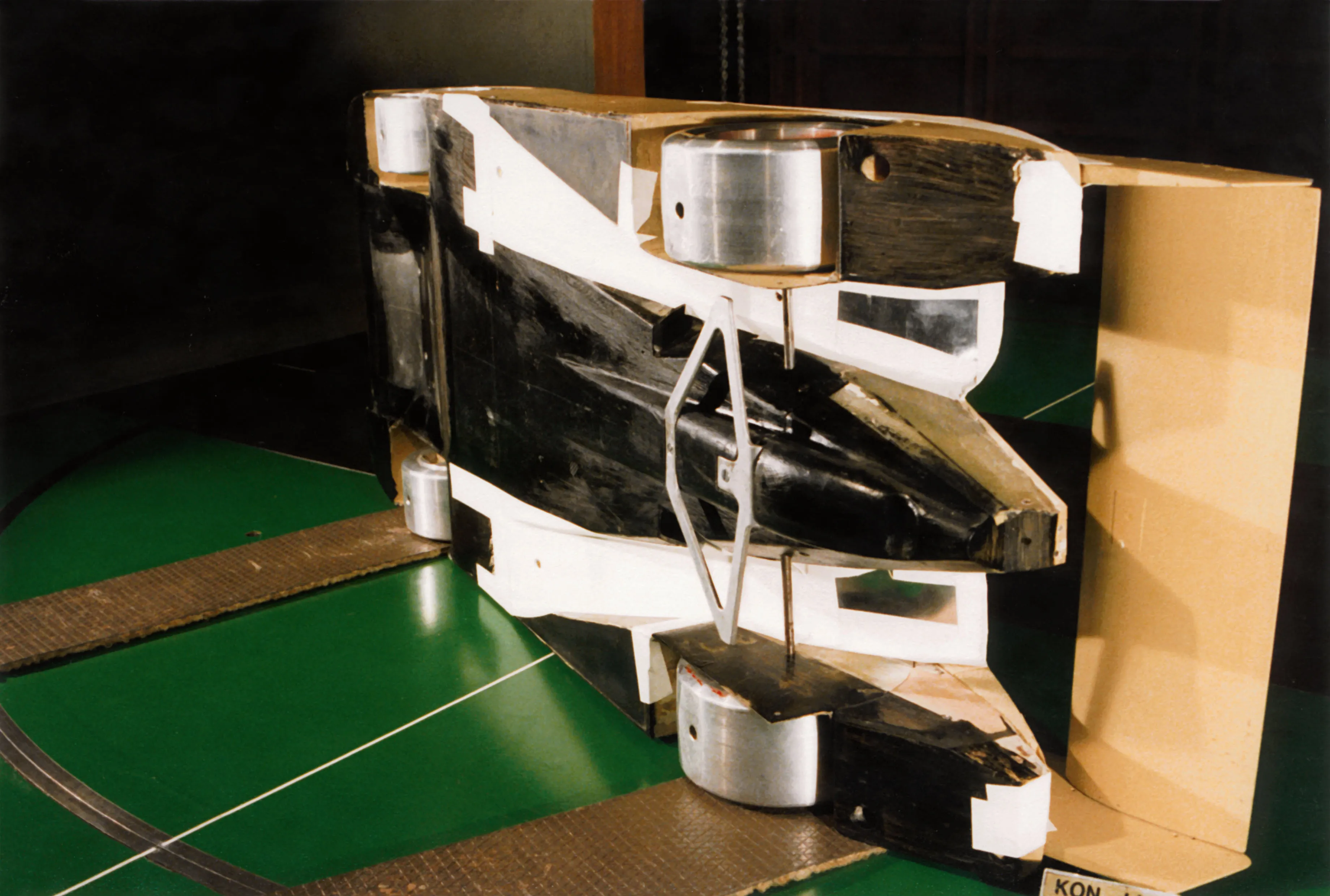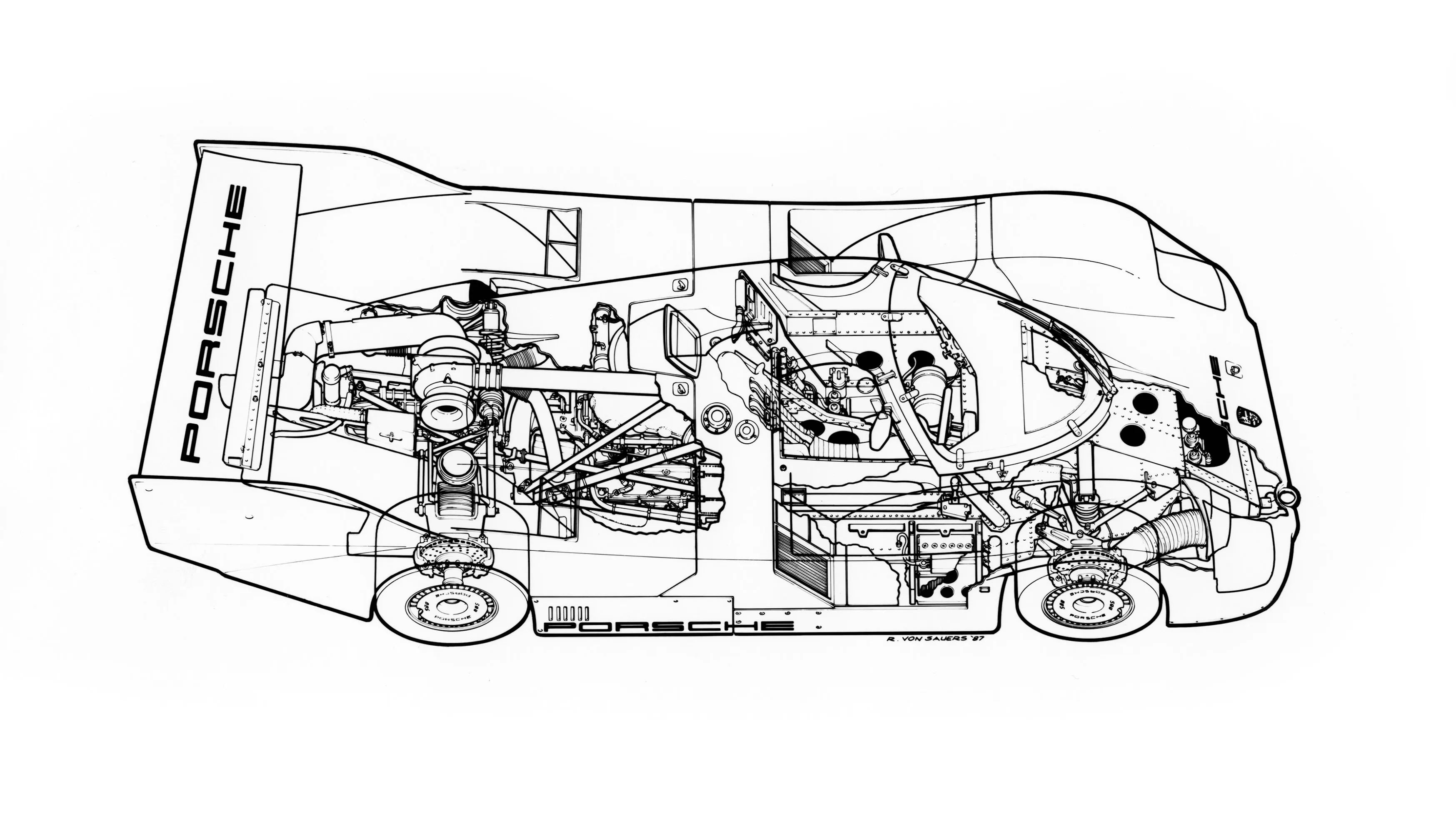Tyres
With the support of tyre partner Dunlop, the 962 C therefore now had wheels that were only 14 inches wide instead of 16, but their diameter was increased from 18 to 19 inches. In terms of high cornering speeds, the tyre contact area was therefore roughly the same, but the reduction in tyre width meant that the diffuser channels can be made 50 mm wider, providing even more downforce.

+
+
Tyres
Gearbox
As early as the late 1960s, Porsche was working on the development of a dual-clutch gearbox with the aim of being able to perform gearshifts with virtually no interruption to the engine’s power delivery. Since the control electronics that were fundamentally necessary for such a gearbox to function perfectly were not available at the time, this system still worked purely mechanically – as did the first PDK that Porsche developed for the 956. “That, however, proved to be a barely viable option. The system sometimes worked very erratically and gave drivers some unpleasant surprises,” recalls Singer. The decision was therefore quickly made to switch to an electronic-hydraulic control system. Porsche used the PDK for the first time at Imola in 1984. After several races with technical problems, a 962 C with PDK won at Monza in 1986.

+
+
Gearbox
Engine
Porsche initially fits the 962 with an aircooled, single turbocharger, 2.8-litre engine. The debut at the Daytona 24 Hours in February 1984 under Mario and Michael Andretti starts with pole position. However, in the race, a technical problem sidelines the car and it travels home to join the Porsche Museum. From July 1984, the 962 is powered by a 3.2-litre, 720 PS air-cooled turbo engine. From 1985 to 1988 without exception, the car clinches an IMSA GTP title.

+
+
Engine
Chassis
The 962 C was based on the Porsche 956. It retained the aluminium monocoque and underbody with ground effect, but its wheelbase was extended by 120 millimetres. With this model, Porsche continued the 956’s series of long-distance racing victories and also took part in Supercup sprint races from 1986.

+
+
Chassis
Aerodynamic
When the 962 C was created as a result of the changes to the regulations for the 1985 season, Porsche took the opportunity to optimise its Group C racing car in aerodynamic terms as well. Since the flat wide six-cylinder boxer engine did not allow for an optimal design of the diffuser channels in the rear area, Norbert Singer was on the lookout for a new solution. “The wind tunnel had shown that we could improve downforce with narrower tyres and wider diffuser channels,” he explains.

+
+
Aerodynamic
